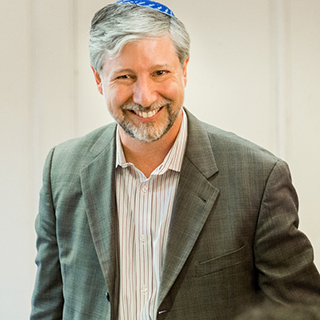Holy Innovation and the Festival of Hanukkah

What is the essential message of Hanukkah, the beloved Festival of Lights? Like many of our holidays, this celebration is protean, shifting shape to accommodate our changing Jewish needs. American Jews have viewed it as a celebration of religious freedom, as if Judah Maccabee were an ancient Roger Williams, championing the rights of religious minorities and establishing the separation of religion and state. Israelis have seen the Maccabees as early nationalists, rising up to wrest sovereignty over the Holy Land from its foreign occupiers, and establishing a political refuge where Jews could live in dignified self-determination. Mystics have viewed Hanukkah as the recurrent flow of hidden light from the uppermost realms of heaven into the darkest expanses of the material world so that every year is a miraculous expression of divine grace. And children everywhere have claimed Hanukkah as their own—it is the festival of candles, candies, doughnuts, games, and presents galore.
These multiple meanings may each claim a measure of plausibility, since defining the historical Hanukkah is practically futile. While the Hasmoneans (Maccabees) were in some ways traditionalists who sought to augment Jewish ethnic and religious solidarity in the face of Hellenism, they themselves were also innovators who bucked venerable Jewish traditions. Historian Seth Schwartz reviews some of these innovations in his book Imperialism and Jewish Society, 200 BCE to 640 CE.The Hasmoneans were from neither the Davidic line of Judean kings nor the Zadokite line of the high priests, yet they eventually claimed both of these crowns. While they opposed the Seleucids, they integrated Greek language, rhetoric, and material culture into their own governing practices. The Hasmoneans conquered neighboring territories and mass-converted the Idumeans and other ethnic groups. This large-scale integration of non-Judeans into the Jewish religion was in contrast to prior and subsequent Jewish policy, and had far-reaching consequences. Eventually, the Hasmoneans turned on each other, drawing in the Romans and sowing the seeds of destruction for Jewish sovereignty, Temple worship, and even existence in Judea.
The Hasmoneans both resisted and embraced Greek culture, and their holiday therefore exemplifies the inner Jewish conflict between piety and assimilation. Hanukkah always feels contemporary because most Jews continue to feel conflicted by its themes of integration and separation from surrounding cultures. Jews simultaneously want to participate fully in the political, economic, and cultural life of their Gentile neighbors while also maintaining a sense of Jewish difference and even destiny. The Joseph story always coincides with Hanukkah, and who could be a better exemplar of the challenges of living in two worlds than the grand vizier of Egypt? In Parashat Mi-ketz, Joseph rises in spectacular fashion from prison to the throne, changing his clothes, name, and even language to the extent that his own brothers do not recognize him. And yet within, he remains Joseph, son of Jacob, the Hebrew lad who remembers his essential difference and destiny. Joseph’s appearance on Hanukkah reminds us that success in secular society must not be permitted to draw us away from our distinctive Jewish identity.
A final facet of Hanukkah, which is particularly apt for our times, is its demonstration of the possibility of and need for religious creativity. However Hanukkah began, it developed and flourished as a new Jewish festival replete with unprecedented rituals and liturgy. This feature of Hanukkah is recognized in an early collection of festival midrash called Pesikta Rabbati (#3). The text opens by noting that the Torah reading for Hanukkah from Parashat Naso in Numbers lists the gifts of Ephraim on the seventh day, prior to the gifts of Menashe on the eighth. This order follows the preference of Jacob, who back in Genesis reversed hands and blessed his younger grandson first. The text from Numbers likewise reverses the birth order of Joseph’s sons, apparently in deference to the actions of Jacob. According to the midrash, Jacob made a decree that God, as it were, had to follow. The midrash then links Jacob’s innovation to that of the Sages who invented Hanukkah. They decreed a festival that later generations of Jews would be commanded to follow, and which would eventually assume the status of divinely mandated religious law.
The essence of Hanukkah is thus the power of religious innovation. Judaism must continue to adapt its religious message, ever growing and evolving so that Jews may spread the light of holiness in every land and era where they live. As we celebrate this festival of lights, let us think of the innovations that are demanded by our day, and the ways that these can be bound to our tradition so that they too can become sanctified features of Judaism for future generations. Hag urim sameah—Happy Hanukkah!
The publication and distribution of the JTS Commentary are made possible by a generous grant by Rita Dee and Harold (z”l) Hassenfeld.



